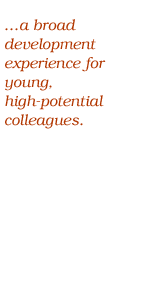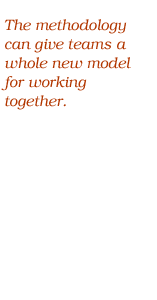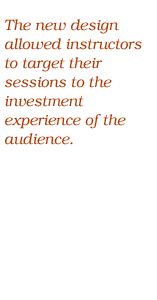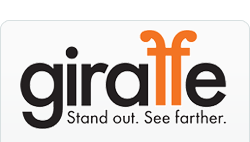Finding tomorrow's leaders |
Innovation: pushing the limits |
New customer strategy |
Barry Callebaut AG
Source high-potential programSituation:
The new leadership development effort for a global manufacturing company needed a "starting point." The senior leadership knew their current managers, but who were the young talents in the company who should be developed for leadership in the next decade?
Challenge:
In some management cultures, the concept of a "high potential" can mainly be a problem of identification: with a short track record in performance management and succession planning, how could managers identify and develop people they thought were especially talented?
Solution:
We promoted the program broadly, working with managers to get their recommendations and with business unit senior managers for approvals. We designed a broad development experience — named "Source" — for these high-potentials. The two-module program includes a team project between sessions. Program objectives are to increase participants' business knowledge, enhance professional competence and develop an international network in the company.
Result:
The Source program has become a popular element of the overall learning & development offer. Participants have enjoyed a high percentage of new assignments and promotions, largely due to their experiences and increased visibility in Source. Plus, senior managers have become more familiar with their own talent pools and more focused on development.
"For Barry Callebaut, the Source program has been a true success, and very instrumental in three key areas — it supports a cultural change around leadership potential in the organization; it gives local high-performers a global perspective; and it has been a great experience that has stayed with the participants long afterward.
Jerry Murphy did a wonderful job in both designing and delivering Source. As part of this success, Jerry also became a mentor to many of the participants, as well as a key contact for managers in verifying young talents."
Alice Larsen, former Head of Global Human Resources, Barry Callebaut AG

Various clients
Pushing the limits for new ideasSituation:
Managers and teams are increasingly asked to "be innovative." However, without a supportive culture and specific tools, real innovation can be a difficult goal.
Challenge:
With expectations high but not defined, managers and teams in all kinds of organizations are often left to their own devices to find ways to become more innovative. In many companies, innovation is institutionalized in a specific department such as product development or marketing. This can create a "civilian" class in the rest of the company, and can ignore a great potential source of ideas.
Solution:
We have successfully applied an immersive brainstorming methodology (based on the Deep Dive™, originally developed by IDEO) to a wide variety of teams and situations. In contrast to random "brainstorming," the immersive method imposes a structure that yields a far better success rate. Done properly, it is rigorously time-based, bound by specific design constraints, and employs divergent/convergent rounds of thinking and feedback to quickly produce a prototype solution.
Result:
The immersive technique produces a rich stream of potential solutions, and gives teams a whole new model for working together. Long-term, teams become more creative, less bureaucratic, and more prepared to collaborate to solve problems. The "focused chaos" of these sessions is a lot more fun than meetings, too.
Deep Dive™ is a trademark of Deloitte Consulting.

Fidelity Investments
New customer education strategySituation:
Enrollment in Fidelity's employer-sponsored retirement plans wasn't growing on pace with employee populations. Employee awareness of investment matters (e.g. asset allocation) was also below expectations.
Challenge:
Fidelity's investment education business (FIRSCO) and their prime contractor, Pearson Performance Solutions, needed an effective strategy for the customer education programs. They faced a complex learner environment with multiple stakeholders, plus the investment education content was redundant and not suited for re-purposing to online and other applications.
Solution:
In a high-level analysis of customer needs and existing programs, we conducted dozens of stakeholder interviews, observed existing programs, and audited the complementary online resources, both current and in development.
Fidelity enthusiastically accepted the new design we proposed. Instead of content-oriented programs, the new design focused on the sequence of customer actions (e.g. enroll in the program, defer earnings, etc.). The new arrangement allowed instructors to target their sessions to the investment experience of the audience, and provided a useful map of investor choices for the website.
Results:
We presented the design strategy in an interactive workshop for Fidelity instructors, and a final presentation and report. Fidelity implemented the new design across the organization, both in live instruction as well as in various web applications.
"Jerry Murphy was able to quickly understand FIRSCO's business issues and how their learning intervention could be used to help increase customer wallet share, a key driver for Fidelity in terms of accumulating assets under management. Because Jerry was so keen on focusing on Fidelity's business, it helped our sales team gain credibility in conversations regarding additional business opportunities at Fidelity. Without Jerry's excellent work, the conversations with Fidelity would have come to a stop."
John-Paul Lacombe, Director, Solutions Architects, Pearson Performance Solutions


